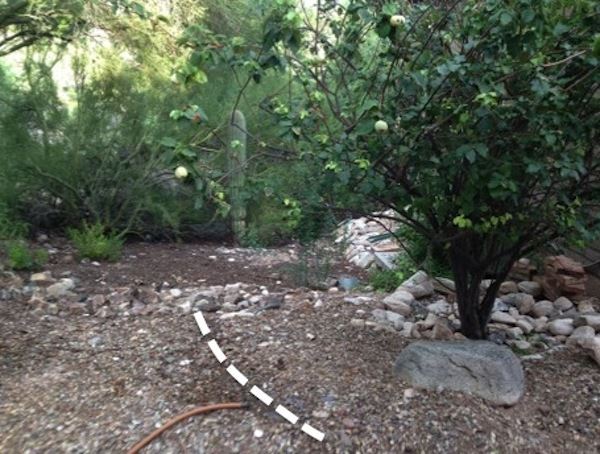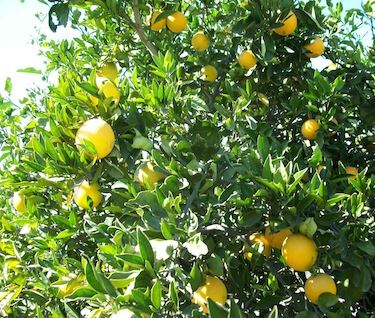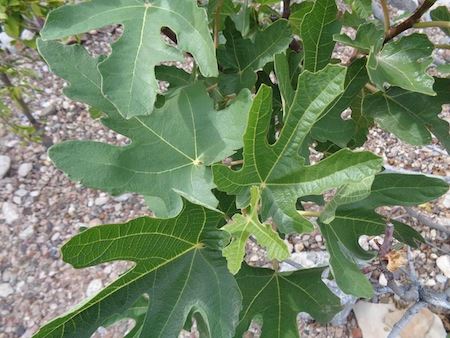Watering Click Here for a PDF of Watering Trees require the right amount of water at the right time to produce a bountiful harvest. Watering too often or too much—especially in heavy clay soils—can lead to root-rot and disease. If trees receive too little water, leaves will wilt, fruit may be small and shriveled and the tree may become stunted and fail to produce. Many native trees do not need additional water once they have established, however nonnative fruit trees require consistent, deep watering throughout the year to produce high yields of quality fruit. We recommend a combination of native and nonnative edible trees to balance your overall water and food production needs. Water in the desert is a valuable resource—as a general rule, observe your trees and pay close attention to the natural rainfall, temperatures, and the tree’s condition throughout the year. Adapt your watering schedule accordingly. For tree-specific monthly watering suggestions, see the Arizona Edible Tree Directory. Where to water The roots of mature trees extend horizontally to a distance wider than the canopy drip line. Water mature trees at and slightly beyond this drip line. Do not water the base of the tree where moisture could get trapped in tree bark and lead to fungal growth and disease. How frequently to water Newly planted trees must be kept well watered until the roots grow into adjacent soil. In warm weather, fill new tree basins once or twice a week with water. Water needs for trees are highest in April through June, and then decrease during the July to September monsoon season. Water needs for fruit and nut trees remain high if trees are leafed out and producing fruit. Water requirements generally decline in fall and winter as temperatures drop and trees stop producing and drop their leaves. For citrus and other trees that do not drop leaves in winter, water needs will continue at higher levels. Trees that need more frequent irrigation include those that are newly planted, young, not planted in basins, shallow-rooted, non-dormant, and in soils with less organic matter and soil life—such as sandy soils. Trees that need less frequent watering include those that are planted in clay soils, in basins, mature, deep-rooted, dormant, and planted in soils with more organic matter and soil life. How much to water The water an individual tree needs depends on the species, variety, canopy size, general climate, microclimate, and other factors. Categories of low, medium and high water-use trees provide general estimates. However, look closely at each tree’s health and soil moisture, and then adjust watering to the season, rainfall and temperature month-to-month as needed. Trees that need more water include those planted in sandy soils and trees that are nonnative, young, shallow-rooted, fully leafed and producing. Trees that need less water include those trees that are planted in clay soils, native, mature, deep rooted and dormant. How deep to water Mature trees have an active root zone of 1-3 feet below the soil surface. Water should penetrate at least 2 feet to foster deep root growth and long-lived trees. Irrigate long enough to soak the soil deeply—being careful not to overwater clay soils. If watering does not penetrate more than a few inches, the tree will require more frequent irrigation, and its roots will be more susceptible to drying out quickly. Periodic deep watering will encourage deep root growth and more resilient trees. Check watering depth by pushing a metal rod or stick into the soil to see how deeply it easily penetrates; the rod will stop at dry soil. You can also dig 4-6 inches down to visually find the depth of the moisture, or gather a handful of soil to rub between your fingers and feel for dampness. The top few inches of the soil can dry out, but the tree should have access to deeper soil moisture throughout the year. To flush salt buildup, water trees very deeply about once a month during summer. Irrigating with harvested rainwater helps dilute salts. |
Hose positioned below the drip line of a quince tree (white line), where roots are actively growing.
A fruiting lemon tree needs more frequent watering than a dormant tree that drops its leaves in winter.
Young nonnative fig tree in sandy soil, fully leafed out, needs more water than dormant trees and native trees. |
CAUTION: Never eat anything that is not properly identified. It is your responsibility to ensure that all fruits, nuts, seeds, pods and other edible products of trees and shrubs are correctly identified and safe to eat before eating them or serving them to others.
Copyright 2023
LEAF is under the fiduciary stewardship of the Arizona Community Tree Council, a 501(c)3 non-profit organization.
70 S Val Vista Drive, Suite A3-186, Gilbert, AZ 85296






